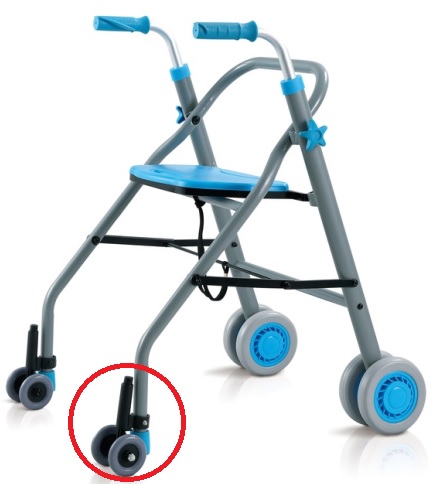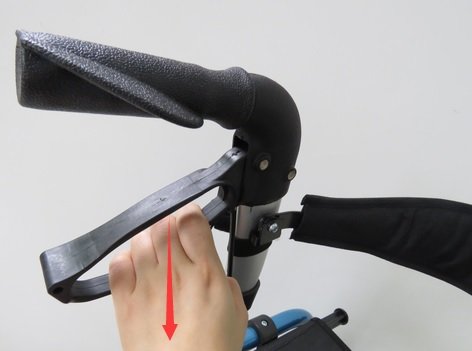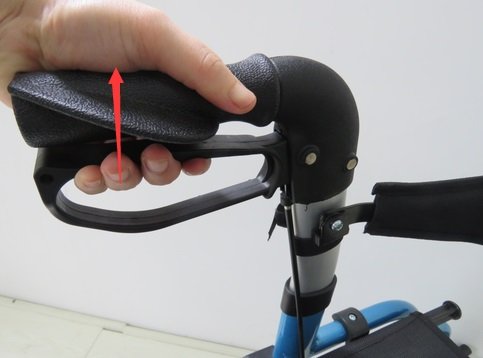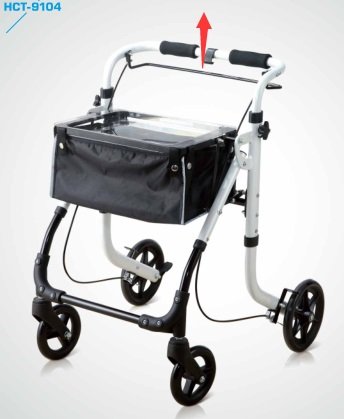Rollator brakes
What's to stop you?
With a rollator you want brakes that are easy and quick to operate so you feel in control. Traditional choices include push-down and loop. In addition, an innovative reverse braking system aids those who have trouble walking with a "natural" gait.
Push-down
Push down brakes are operated by downward pressure on the spring-loaded frame. These are the easiest brakes to operate. When you lean on the rollator frame, the motion of the rear wheels is interrupted. This halts forward movement while you shift weight from one foot to the other.
Push down brakes may be unsuitable for either petite users who can not push down heavily enough on frame or heavy users who may engage the brakes too constantly.

Loop
Cable loop brakes resemble bike brakes. They require squeeze action and simultaneous use of both hands. However, they provide greater stability than pressure brakes. Because they offer instant braking action, cable brakes must be used cautiously.
Special brake features
A locking feature frees you from having to continuously maintain a grip. Instead the rollator's brakes can be locked in the "on" position. This is a "must have" for being able to safely use a wheeled walker's built-in seat.

Slow-down brakes allow you to control the rollator's speed on an incline. Afraid your walker might run away from you on a hillside? Slow-down brakes let you set the brake tension, so the wheels roll in a controlled fashion.

Single-hand brakes let one hand do all the braking, so if you have a strong side, it can take over for the weak side.


